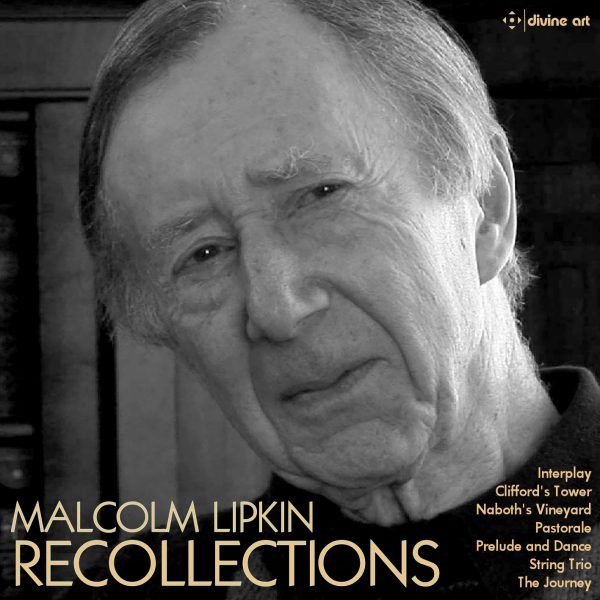The Chronicle Review Corner
This celebrates 50 years of the composing career of Malcolm Lipkin (1932-2017). His music is distinctive and expressive, the sound varying.
It might be a little harsh in places for some; he’s not a composer for people who dabble in a bit of nice violin music and it’s music for people who want their music to be intellectually stimulating, although on the whole it’s not ‘difficult’.
The sleeve notes say that he studied with Hungarian-British composer Matyas Seiber who instilled in him his belief that “composition is the art of including everything that is relevant and nothing that is redundant,”, and it does have a pared-down quality.
The CD opens with Prelude and Dance, written in 1987 as a tribute to Jacqueline du Pré, who had died that year. A haunting opening references her most famous performance, Elgar’s Cello Concerto, the music later getting more energetic, the piano playing rapidly under a more jagged cello. We thought the piano was representative of du Pré’s life, the cello representing her illness; the sleeve notes say it “symbolises the triumph of the human spirit over physical adversity”.
Naboth’s Vineyard for recorder, cello and harpsichord is next, and its one for listeners who like their music to speak, literally. It focuses on Jezebel, originally the stereotypical false prophet, now a woman who is no better than she ought to be. In the bible, Mr Jezebel, Ahab, wanted to buy Naboth’s vineyard but Naboth declined; Jezebel arranged for Naboth to be executed on false charges of blasphemy. The music portrays the wheedling Ahab pleading with Naboth prior to it all going wrong, the cello represents Naboth (and the prophet Elijah), the harpsichord Jezebel and the recorders Ahab.
It portrays the discussion well, though the sound is strident in places, particularly as Naboth becomes more desperate. In other places the recorder soars as Ahab presumably waxes lyrical.
Similarly descriptive is the later Clifford’s Tower, which tells the tale of 150 Jews who took refuge inside the eponymous tower, which is in York and now opposite the friendliest Hilton Hotel in the country. With no prospect of a safe escape, the Rabbi suggested a mass suicide (from the tower, not the Hilton). Like the story of Naboth, the music reflects how Lipkin imagines the mood inside the tower.
The work is cast in three sections played without a break: Into Darkness evokes the terror of the hunted and the evil of the oppressors, with echoes of Jewish music; Threnody is more sorrowful; Hymn to Peace reflects the composer’s own “plea for tolerance in a fragile world:. The sleeve notes say he completed the final bars of the work and switched n the radio to hear a news report of a mass killing in Nicaragua. It never ends.
A major piece closes the CD, the String Trio, in four movements. This is more traditional in sound, a little sombre and introspective but closing off the programme nicely.
In between the major works are several shorter pieces, including Interplay; this is for recorder, harpsichord, viol de gamba and percussion including tubular bells, the viol de gamba replaced by cello. It features ethereal recorder set to percussion, with cello, and works better than might be imagined, although after the structured dialogue of Naboth, it seems a little unfocused. The Journey is the shortest piece on the track, a posthumous tribute to composer John McCabe.
The players on this are The Nash Ensemble, John Turner, Nicholas Trygstad, Janet Simpson and David Corkhill.
@divineartrecordingsgroup
A First Inversion Company
Registered Office:
176-178 Pontefract Road, Cudworth, Barnsley S72 8BE
+44 1226 596703
Fort Worth, TX 76110
+1.682.233.4978












